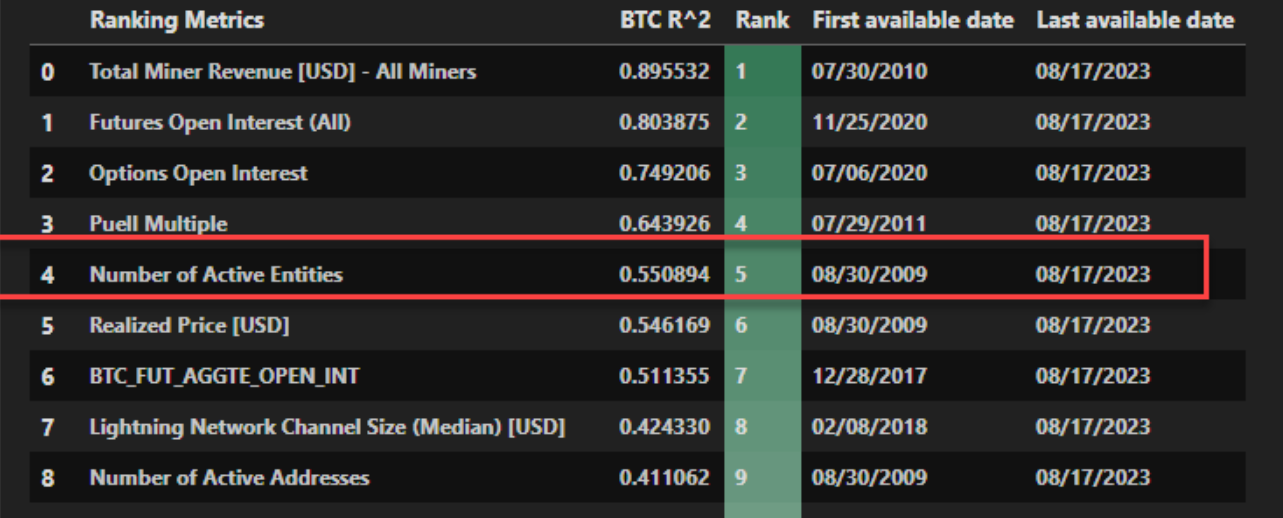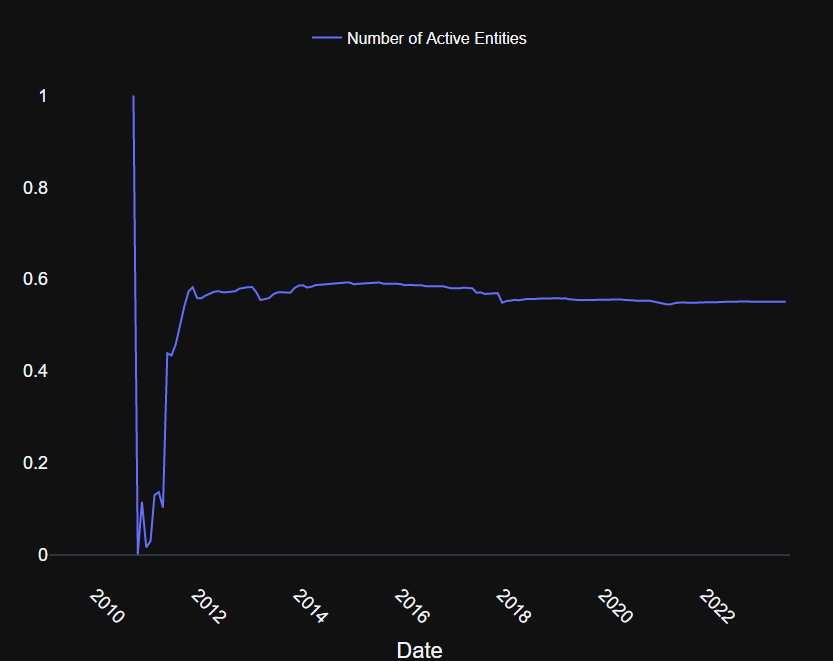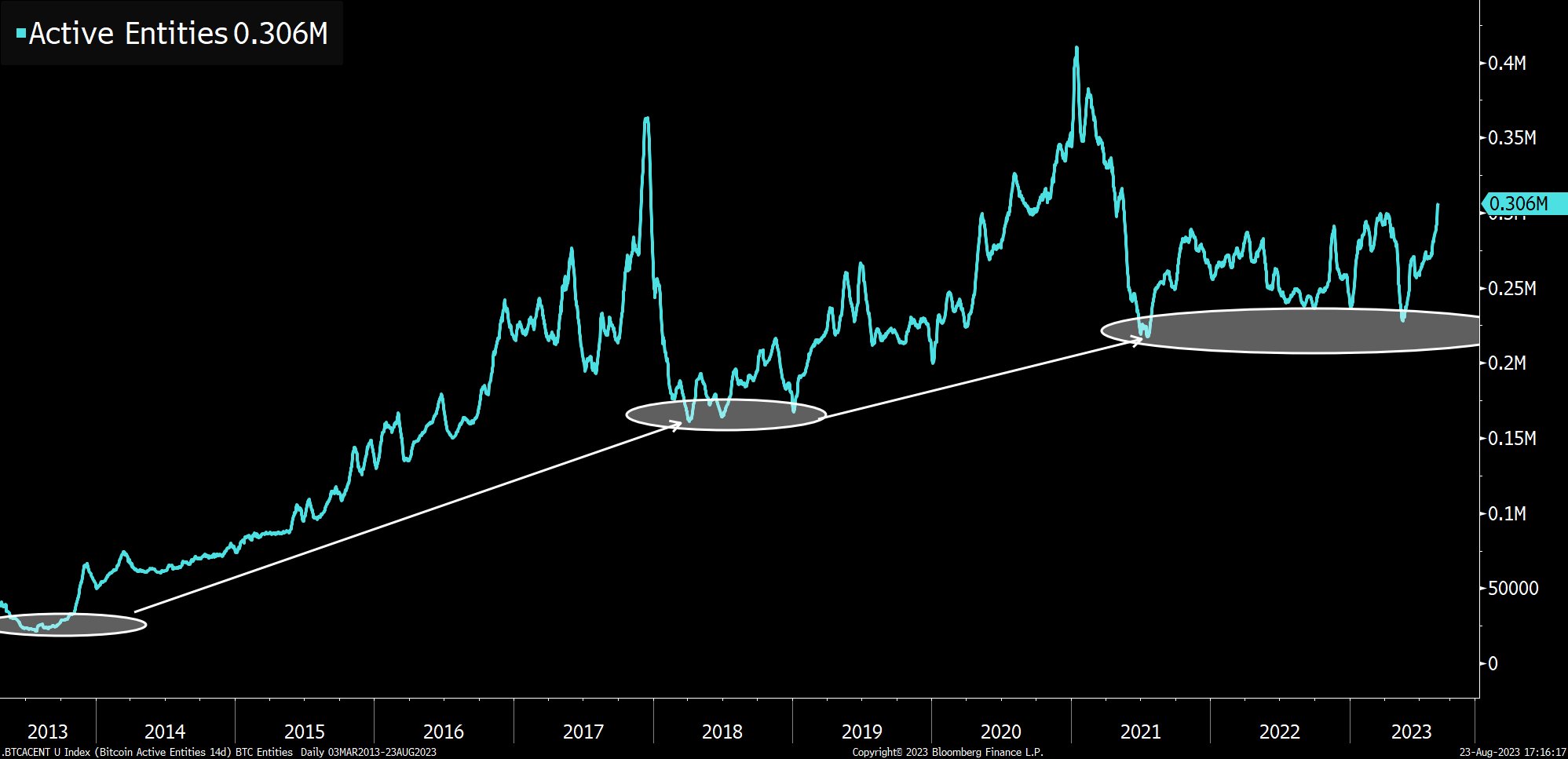This Indicator in Bitcoin Shows that the Price is Preparing for a Rise!
BTC
BTC/USDT
$27,013,740,273.16
$93,845.03 / $91,024.00
Change: $2,821.03 (3.10%)
+0.0002%
Longs pay
Contents
- Bloomberg Intelligence analyst Jamie Coutts spoke about the BTC active assets metric in a new article on the X platform and explained that this metric has a strong relationship with the price of the asset.
- As can be seen from the table, the r-squared value of active assets is 0.55. This means that 55% of the fluctuations in the price of the cryptocurrency are dependent on this variable.
- Bitcoin active addresses have stagnated during lows in each cycle, but have seen an increase during periods in between, although the pace has slowed over time.
The Bitcoin indicator analyzed by Bloomberg Intelligence analyst Jamie Coutts may indicate a bullish rally.
This Indicator in Bitcoin Indicates an Increase
A Bitcoin on-chain indicator is said to be a positive signal for the value of the asset. Bloomberg Intelligence analyst Jamie Coutts spoke about the BTC active assets metric in a new article on the X platform and explained that this metric has a strong relationship with the price of the asset.
“Active assets” here refers to the measure of the total unique Bitcoin addresses participating in any transaction activity on the blockchain. This metric naturally includes accounts, including senders and receivers.
When the value of this metric increases, it means that the number of users participating in the network has increased. Such a trend is an indication that the adoption of the asset is growing. On the other hand, decreasing values of the indicator indicate a potential decrease in interest in the cryptocurrency, as fewer addresses become active on the blockchain.
According to the analyst, the active assets metric has a high r-squared value with Bitcoin.
As can be seen from the table, the r-squared value of active assets is 0.55. This means that 55% of the fluctuations in the price of the cryptocurrency are dependent on this variable.
Only a few metrics have a higher r-squared value, indicating that active assets are one of the indicators with the strongest statistical relationship with BTC. Coutts notes, “What is important is that this relationship is a stable one over time (except for irregular pre-2012 data).”
Here is a graph showing how active assets in Bitcoin have changed throughout the history of the cryptocurrency:
As seen in the graph, Bitcoin active addresses have stagnated during lows in each cycle, but have seen an increase during periods in between, although the pace has slowed over time.
Since 2021, the indicator has been in a long period of stagnation and seems unable to break out of a specific range. However, it appears that things are starting to improve.
CMT explains that it appears to be a TA-style breakout so far, but it is not yet clear whether Bitcoin’s active assets have truly broken out of the stagnation range.
If the metric can stay above the range for the next few weeks, it can confirm that additional assets entering the network are truly planning to be permanent, thus indicating an increase in positive adoption for Bitcoin.
Lucien Renard
Comments
Yorumlar
Other Articles
Bitcoin Surges to $93,888: How Venezuela-US Tensions Triggered a Crypto Rally
January 5, 2026 at 07:04 AM UTC
Tether Adds Nearly 9,000 Bitcoin to Reserves in Q4 2025, Reaching 96,185 BTC
January 1, 2026 at 03:25 PM UTC
Bitcoin’s Potential 2026 Rebound Debated Amid Bottoming Signals
January 1, 2026 at 12:16 PM UTC



